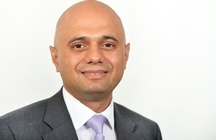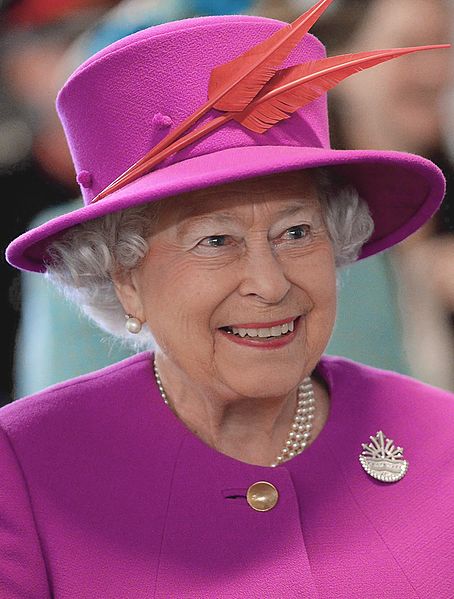Sajid Javid – 2022 Statement on Elective Treatment
The statement made by Sajid Javid, the Secretary of State for Health and Social Care, in the House of Commons on 8 February 2022.
With permission, Mr Speaker, I would like to make a statement on a new, ambitious elective recovery plan—the NHS’s delivery plan for tackling the covid-19 backlog of elective care.
The NHS has responded with distinction during the country’s fight against the virus, caring for over 700,000 people with covid-19 in hospital in the UK and delivering a vaccination programme that is helping this country to learn to live with the virus, while at the same time doing so much to keep non-covid care going. Nobody—no institution—felt the burden of the pandemic more than the NHS. There have been 17 million cases of covid-19 and the NHS has had to respond to the original variant, the alpha wave, the delta wave and, most recently, of course, the omicron wave. Despite these pressures, we had one of the fastest vaccination programmes in the world, including one of the fastest booster programmes in the world.
Sadly, as a result of focusing on urgent care, the NHS could not deal with non-urgent care as much as anyone would have liked. The British people have of course understood this. Despite those exceptional efforts, there is now a considerable covid backlog of elective care. About 1,600 people waited longer than a year for care before the pandemic. The latest data shows that this figure is now over 300,000. On top of this, the number of people waiting for elective care in England now stands at 6 million, up from 4.4 million before the pandemic. Sadly, that number will continue rising before it falls.
A lot of people understandably stayed away from the NHS during the heights of the pandemic, and the most up-to-date estimate from the NHS is that that number is around 10 million. But I want these people to know that the NHS is open and, as Health Secretary, I want them to come forward for the care they need. We do not know how many will now come forward—we do not know whether it will be 30% or 80%—because no country has faced a situation like this ever before. So in developing this plan, the NHS has had to make a number of assumptions. Even if half of these people come forward, this is going to place huge demand on the NHS, and we are pulling out all the stops so that the NHS is there for them when they do. We have already announced that we are backing the NHS with an extra £2 billion of funding for elective recovery this year and £8 billion on top of that over the next three years. In addition, we are putting almost an additional £6 billion towards capital investment for new beds, equipment and technology.
Today we are announcing the next steps, showing how we will help this country’s health and care system to recover from the disruption of the pandemic but also how we will make reforms that are so important for the long-term future. That will allow the NHS to perform at least 9 million extra tests, checks and procedures by 2025 and around 30% more elective activity each year in three years’ time than it was doing before the pandemic. This bold and radical vision has been developed with expert input from clinical leaders and patient groups. It will not just reset the NHS to where it was before covid but build on what we have learned over the past two years to transform elective services and make sure that they are fit for the future.
This plan focuses on four key areas. The first is how we will increase capacity. On top of enormous levels of investment, we are doing everything in our power to make sure that we have even more clinicians on the frontline. We now have more doctors and nurses working in the NHS than ever before. We have a record number of students at medical school and a record number of students applying to train as nurses. The plan sets out what more we will be doing, including more healthcare support workers and the recruitment and deployment of NHS reservists. We will also be making greater use of the independent sector, which formed an important part of our contingency plans for covid-19, so that we can help patients to access the services they need at this time of high demand.
Secondly, as we look at the backlog, we will not just strive to get numbers down but prioritise by clinical need and reduce the very longest waiting lists. Assuming that half the missing demand from the pandemic returns over the next three years, the NHS expects the waiting list to be reducing by March 2024. Addressing long waits is critical to the recovery of elective care, and we will be actively offering longer-waiting patients greater choice about their care to help to bring down these numbers.
The plan sets the ambition of eliminating waits of longer than a year for elective care by March 2025. Within this, no one will wait longer than two years by July 2022, and the NHS aims to eliminate waits of over 18 months by April 2023 and of over 65 weeks by March 2024, which equates to 99% of patients waiting less than a year.
I have heard the concerns that have rightly been raised, including by many hon. Members, about the pandemic’s impact on cancer care. On Friday, World Cancer Day, I launched a call for evidence that will drive a new 10-year cancer plan for England, a vision for how we can lead the world in cancer care. This elective recovery plan, too, places a big focus on restoring cancer services.
The NHS has done sterling work to prioritise cancer treatment throughout the pandemic, and we have consistently seen record levels of referrals since March 2021, but waiting times have gone up and fewer people came forward with cancer symptoms during the pandemic. The plan shows how we will intensify our campaigns to encourage more people to come forward, focusing on areas where referrals have been slowest to recover such as lung cancer and prostate cancer. It also sets out some stretching ambitions for how we will recover and improve performance in cancer care: returning the number of people waiting more than 62 days following an urgent referral to pre-pandemic levels by March 2023; and ensuring that 75% of patients who have been urgently referred by their GP for suspected cancer are diagnosed or have cancer ruled out within 28 days by March 2024.
I am determined that we tackle the disparities that exist in this backlog, just as I am determined to tackle disparities of any kind across this country. Analysis from the King’s Fund shows that, on average, a person is almost twice as likely to experience a wait of over a year if they live in a deprived area. As part of our recovery work, we are tasking the NHS with analysing its waiting list data according to factors such as age, deprivation and ethnicity to help to drive detailed plans to tackle these disparities.
Thirdly, this new chapter for the NHS provides an opportunity to radically rethink and redesign how services are delivered, to bust the backlog and to deliver more flexible, personalised care for patients. The pandemic has shown beyond doubt the importance of diagnostics. Although over 96% of people needing a diagnostic test received it within six weeks prior to the pandemic, the latest data shows that has fallen to 75%. Our aim is to get back to 95% by March 2025.
A major part of this will be expanding the use of community diagnostic centres, which have already had a huge impact. These one-stop shops for checks, scans and tests help people to get a quicker diagnosis and, therefore, the treatment they need much earlier. Sixty-nine community diagnostic centres are already up and running, and the plan shows our intention to have at least 100 in local communities and on high streets over the next three years.
We will also keep expanding the use of surgical hubs, which will be dedicated to planned, elective surgeries. They will allow us to do more surgeries in a single day than can be carried out in out-patient settings, so that we can fast-track operations and ensure that patients are more likely to go home on the same day. We have already been piloting these hubs, and we will now be rolling them out across the country.
Finally, we will improve the information and support for patients. I know the anxiety that patients feel when they are waiting for care, especially if they feel that they do not have certainty about where they sit in the queue, and I am determined to ensure that, as we enter this next phase, we will be open and transparent with patients. We will be launching a new online platform called My Planned Care, which will go live this month, offering patients and their carers tailored information ahead of their planned surgery. They will be able to see waiting times for their provider, so they can better understand their expected wait. A third of on-the-day cancellations are due to people not being clinically ready for treatment, and the new platform will also be able to link patients to the most appropriate personalised support before their surgery. This shows the approach that we will be taking in the years ahead, putting patients at the heart of their care and giving the support that they need to make informed decisions. We will also put in place a payment system that incentivises strong performance and delivers value for money for the public.
Just as we came together to fight this virus, now we must come together on a new national mission to fight what the virus has brought with it. That will mean waiting lists falling by March 2024, strong action to reduce long waiting times, and stretching targets for early diagnosis and for cancer care. This vital document shows how we will not just recover, but reform and make sure that the NHS is there for all of us, no matter what lies ahead. I commend my statement to the House.


